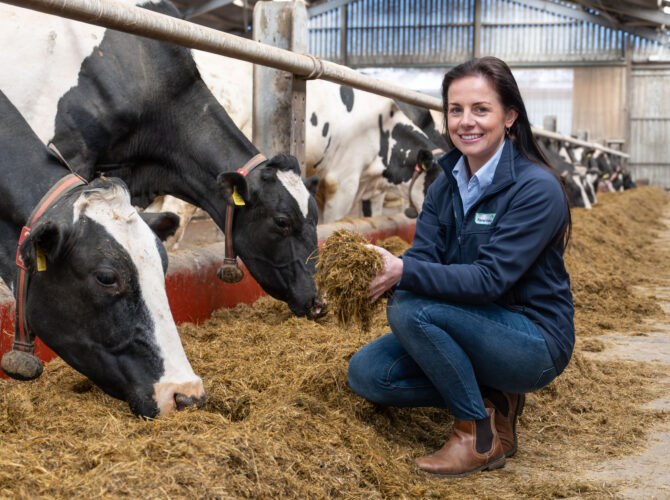Benefits of Better Forage
11th April 2024

High quality forage is the cornerstone to efficient milk production. There are many contributing factors to making high quality silage but driving milk from forage has significant benefits to cow health, performance, and overall farm profitability.
There is often the perception that poor quality silage can be fully compensated for by feeding additional concentrate, which isn’t always possible. Whilst increased feed rates will be required; performance will always be sub optimal on poor quality silage. This is largely due to the difference in digestibility and intake potential.
What is the aim?
For dairy cows, the aim should be an ME (energy) value of 11.2 MJ/kgDM with a D value of 70% or greater.
Every 0.5MJ change in energy value of forage can make over 400 litres/ cow difference, over the course of a year.
Feeding a high ME forage will significantly reduce concentrate feed requirements as the energy is increased in the forage itself, and it is also more digestible so the cow can utilise the nutrients more effectively.
Intake Potential
One factor that can often be overlooked when considering silage quality is ‘intake potential’. This gives a guide as to the potential dry matter intake of the silage. It does not account for the effects of other forages, concentrate feeding or milk yield.
Typically, high quality forages will have a greater intake potential allowing for cows to consume elevated levels of forage dry matter. This also has a positive effect on rumen health.
NDF will reduce intake potential as higher fibre forages are slower to digest and reduce rumen throughput. Young leafy grass will have a low NDF value, whilst stemmier, more mature crops will be significantly higher.
Chop length and presentation of diet also play a critical role in maximising intakes, with a shorter chop length being more desirable.
It is important to remember that a lot of other factors such as feeding practices, management on farm and cow capacity will also have an impact on forage intakes.
Table 1. The effect of average and good quality silage on concentrate feeding and cost.
| Average Silage | Good Silage | |
| ME (MJ/kgDM) | 10.5 | 11.5 |
| Potential intake (kgDM) | 10.5 | 11.5 |
| Milk from forage (litres) | 6 | 10 |
| Concentrate required for 30 litres (kg) | 12 | 10 |
| Feed rate (kg/litre) | 0.4 | 0.33 |
| Concentrate cost per litre (pence) | 13.4 | 11.0 |
To maximise feeding potential from your silage, or discuss feeding strategies, please contact your local Fane Valley Feeds representative or call Laura McConnell on +44 7976 723099


